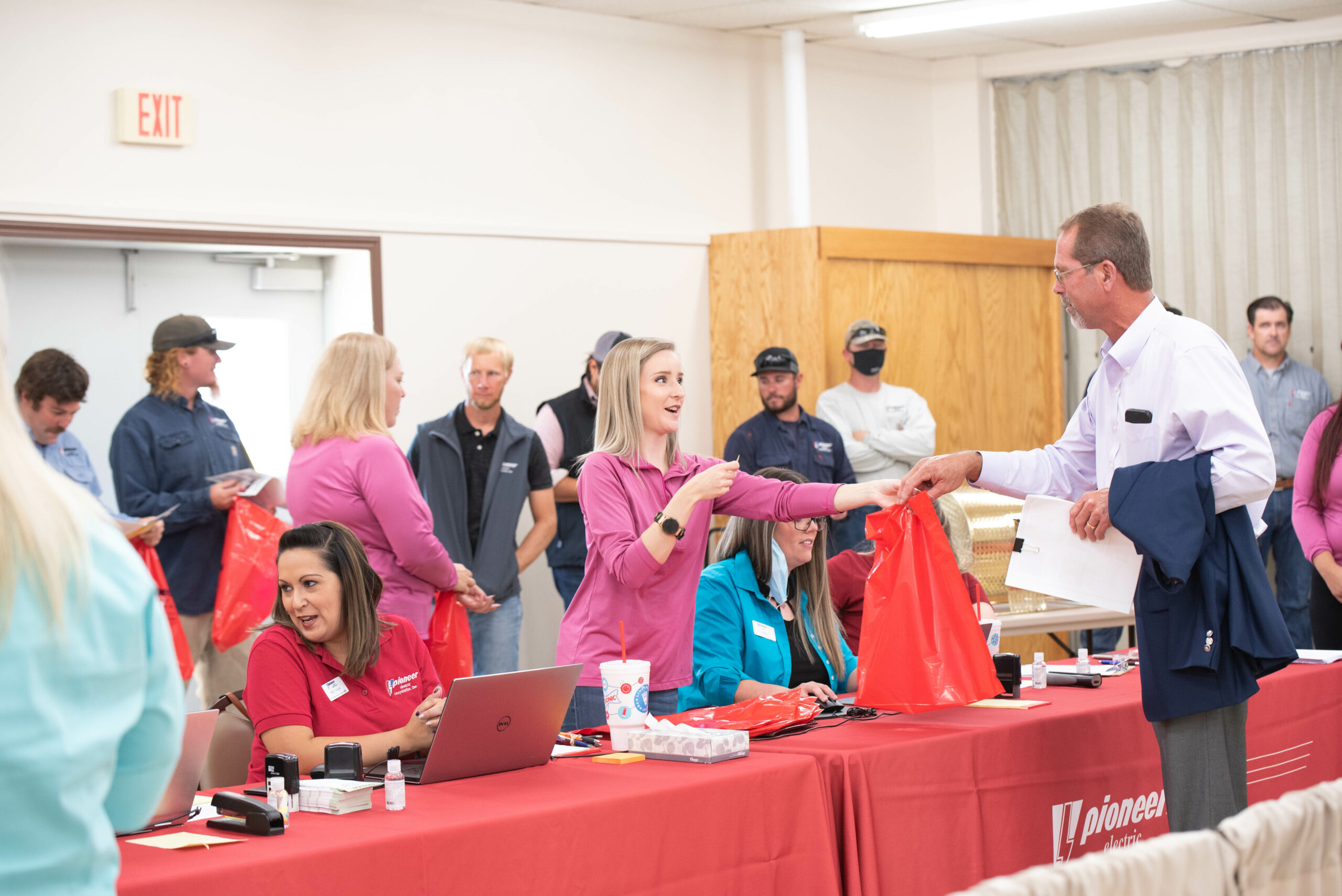What makes up the three-part rate?
Customer Charge: A fixed charge that covers the operating expense incurred by Pioneer Electric for some of the administrative and infrastructure costs needed to provide energy service to members. It has always been listed on members’ bills and will not change.
Energy Delivery Charge/Demand Charge: A charge to appropriately allocate costs to build, maintain or upgrade the infrastructure (power lines, transformers, substation upgrades, etc.) needed to ensure enough energy is delivered to meet members’ needs. The charge is determined by the maximum demand of energy at any point within the billing cycle multiplied by the determined rate for a members’ specific rate class.
Energy (kWh) Charge: The cost for the total amount of energy, measured in kilowatt hour (kWh), used within the billing period. It is calculated by taking the total kWh used by the member and multiplying it by Pioneer Electric’s kWh charge for the member. This charge will decrease with the implementation of the three-part rate structure.
Three-part rate structure and how power is delivered:
Pioneer Electric’s goal is to provide energy service safely and affordably to its members. Pioneer Electric is a distribution cooperative that purchases generated power on behalf of its members and then distributes it to homes, farms, and businesses in its service territory. Pioneer Electric is a not-for-profit cooperative, operating at cost to provide service while working to fairly allocate those costs.
The proposed three-part rate separates the Customer Charge (a set charge for providing service), Energy Delivery Charge/Demand Charge (the rate at which a member uses electricity) and Energy (kWh) Charges (cost per kWh of the total electricity used) assigned to a member’s energy service.
These charges are not new and are a part of Pioneer’s current rate structure. Transitioning to a three-part rate gives Pioneer Electric a more accurate representation of the individual costs of providing its members’ energy service and keeps members with a lower demand from having to help offset the cost of those with higher demand.
What is demand?
Demand is the rate at which a person utilizes electricity. Demand increases when many large or power-hungry appliances operate simultaneously. In these instances, Pioneer Electric must have the infrastructure to ensure enough power is available to the members’ home or business to satisfy their current need for immediate electricity. Pioneer Electric’s system must be built to supply energy at maximum demand for each member. It is important to remember that demand is not the total amount of energy used; it is the rate at which it is being used.
What can members do to manage their demand?
The energy needs of members are not the same. The three-part rate is a transparent look at members’ costs and allows them to see the direct impact of their energy habits. For some, convenience may outweigh the desire to reduce demand. However, those looking to reduce their demand may do so by evaluating their current energy habits. Take time to review if power-hungry tasks can be spread or done throughout the day rather than all at once. The goal is to balance and reduce the rate you are using energy to lower demand. Stagger the use of large appliances (dishwashers, laundry machines, clothes dryers, ranges, ovens, etc.) or use delay start or appliance timers to have them run throughout the day. This may potentially reduce your energy costs.
If you have any questions or would like additional information, please attend the meeting on September 23, 2022 at 9:00 a.m., or contact our office at 620-356-1211 or 1-800-794-9302. You may obtain a complete summary of the proposed rate redesign at Pioneer’s office or by visiting www.pioneerelectric.coop.

